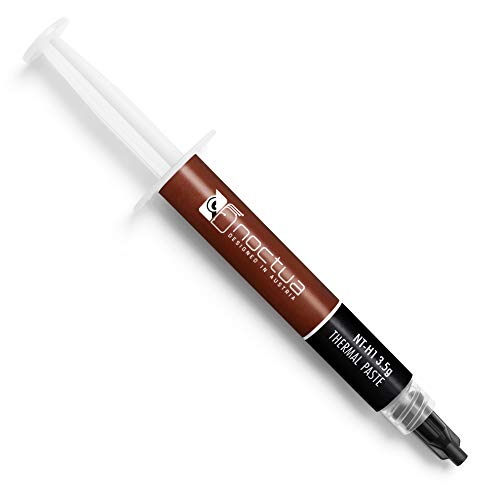Understanding Passive GPUs: What Makes Them Unique
What is a Passive GPU?
A passive GPU is a type of graphics card that operates without a dedicated fan for cooling, relying instead on its large heatsink for dissipating heat. This design makes it completely silent, as there are no moving parts to create noise. The lack of active cooling allows passive GPUs to be an excellent choice for scenarios where sound minimization is critical, such as home theatres or quiet office environments. Typically, passive GPUs are known for their lower power consumption and are ideal for light gaming, media playback, or everyday computing tasks.
How Passive GPUs Differ from Active GPUs
Active GPUs come equipped with built-in fans or cooling solutions that actively ventilate heat away from the unit, making them suitable for high-performance gaming or graphical tasks that generate significant heat. In contrast, passive GPUs excel at maintaining a low noise environment and are generally used in less demanding applications. The unique attribute of passive GPUs is their thermal management strategy, which is driven purely by physical principles rather than mechanical assistance, leading to their distinctive performance characteristics.
Benefits of Choosing a Passive GPU for Your System
Noise Reduction
One of the most notable advantages of passive GPUs is that they operate silently. If we envision a situation where we’re watching a movie or engaging in a conference call, the last thing we want is the distracting whirr of a fan. Choosing a passive GPU allows for an entirely quiet system, enhancing the overall experience without any audio interruptions.
Energy Efficiency
Passive GPUs are often more energy-efficient than their active counterparts. By using less power and reducing energy consumption, we not only save on electricity bills but also contribute positively to environmental sustainability. These cards often produce less heat, which can further reduce the load on the system’s cooling requirements.
Simplicity in Build Design
With no fans to manage, installing a passive GPU can simplify the assembly of your computer. This lack of moving parts reduces the potential failure points and expands the range of cases in which these GPUs can be implemented, allowing us to build passively-cooled systems in compact spaces.
How to Choose the Right Passive GPU for Your Needs
Consider Your Use Case
When selecting a passive GPU, it is essential to evaluate how you intend to use it. If your primary activities involve streaming media, browsing, or light productivity, a mid-range passive GPU should suffice. However, if you plan on engaging in more graphics-intensive tasks, such as casual gaming or graphic design, we recommend opting for a more powerful passive GPU that can still operate within your sound comfort level.
Compatibility with Your System
Before making a purchase, assessing the compatibility of the passive GPU with your existing computer setup is crucial. We should check the available expansion slots on our motherboard to ensure they match the GPU’s interface, whether that be PCI Express or another type. Additionally, it is advisable to consider the power supply requirements to ensure it can support the new component without any concerns.
Thermal Management
Even though passive GPUs do not have fans, they still require sufficient airflow within the case to operate efficiently. When selecting a passive GPU, we should take into account the physical size of the card and the cooling capabilities of our case. A spacious case with good airflow will help maintain the optimal operating temperatures of the GPU.
Setting Up Your Passive GPU: A Step-by-Step Guide
Preparation Before Installation
Before we dive into installation, it is crucial to gather all necessary tools. A Phillips screwdriver and an anti-static wrist strap to prevent static discharge are essential. We should also ensure that our workspace is clean and devoid of any harmful materials that could interfere with electronic components.
Removing the Old GPU (If Applicable)
If we are replacing an existing GPU, the first step is to power down the system and disconnect all cables. We then need to open the case and identify the old GPU. By unscrewing the securing screws and gently sliding the GPU out of the PCI slot, we will successfully remove the outdated component.
Installing the Passive GPU
Next, we slot the new passive GPU into the appropriate PCI Express slot, ensuring it fits snugly and correctly. We then secure it in place using screws. Once installed, we should reconnect all necessary power cables and close the case. Finally, we can power up the system and install the relevant drivers for the GPU to ensure optimal performance.
FAQ: Common Questions About Passive GPUs
Can I use a Passive GPU for Gaming?
While passive GPUs are not typically designed for high-performance gaming, many can manage light gaming quite well, especially with less demanding titles. If we are gamers at heart, opting for a more powerful passive GPU can allow for casual gaming experiences without the noise.
What Is the Lifespan of a Passive GPU?
The lifespan of a passive GPU can be quite impressive, often lasting just as long, if not longer, than active GPUs. Since they lack moving parts that can wear out, we can expect them to provide reliable service over time, provided they are correctly installed and used within intended operational parameters.
Are Passive GPUs Truly Silent?
Yes, passive GPUs are designed to be entirely silent, as they do not require fans for cooling. Their heatsink mechanisms are efficient enough to dissipate heat without generating noise. This makes them an excellent choice for those of us who desire a whisper-quiet computing experience.























